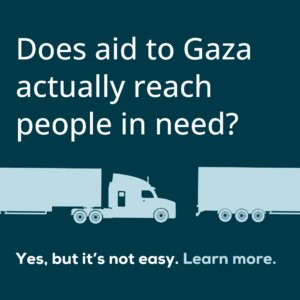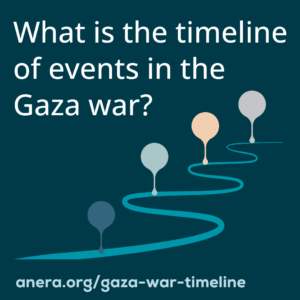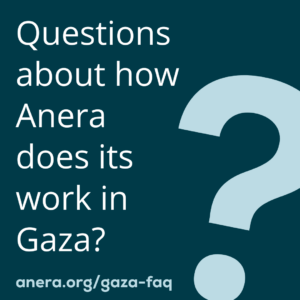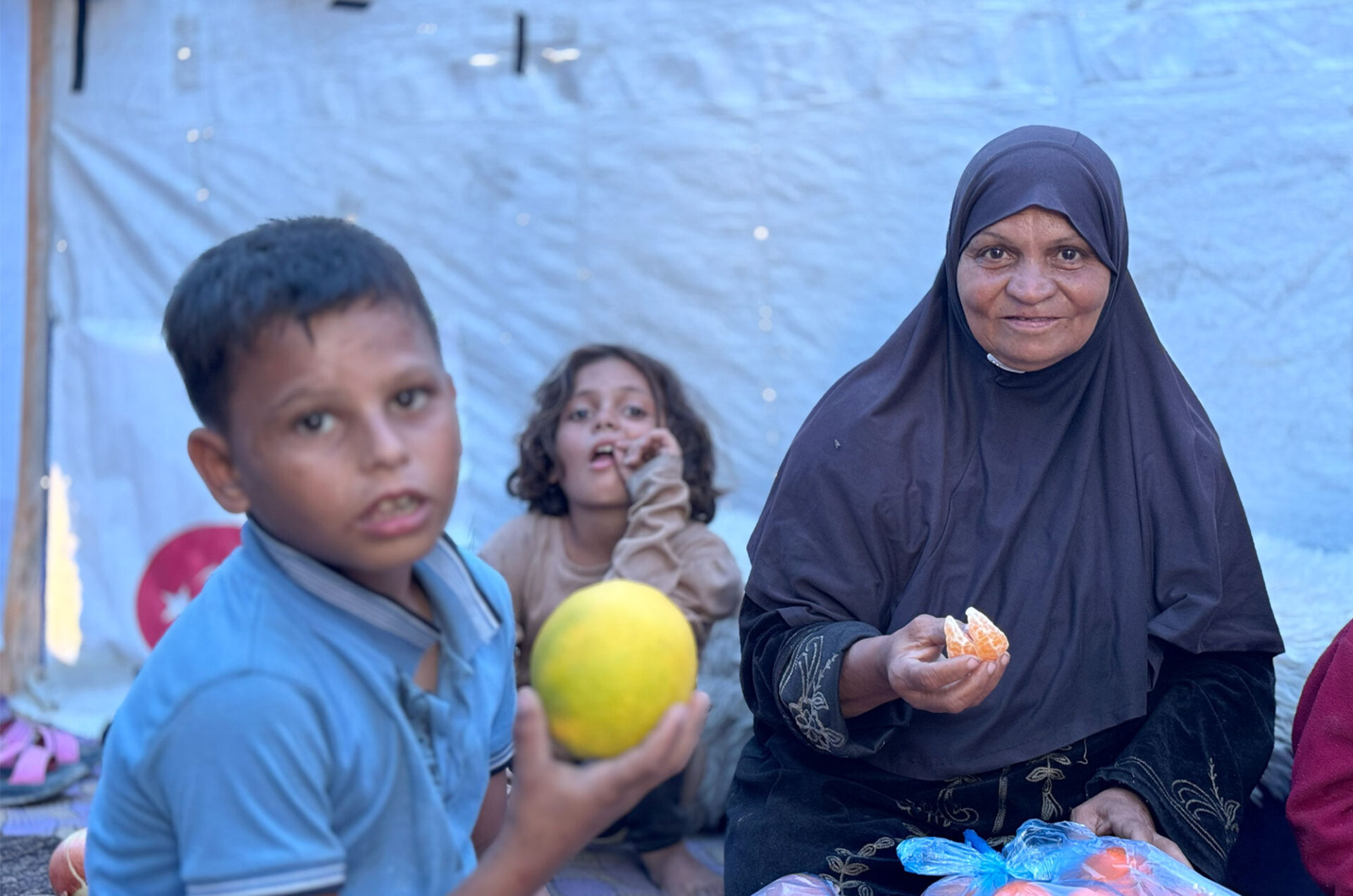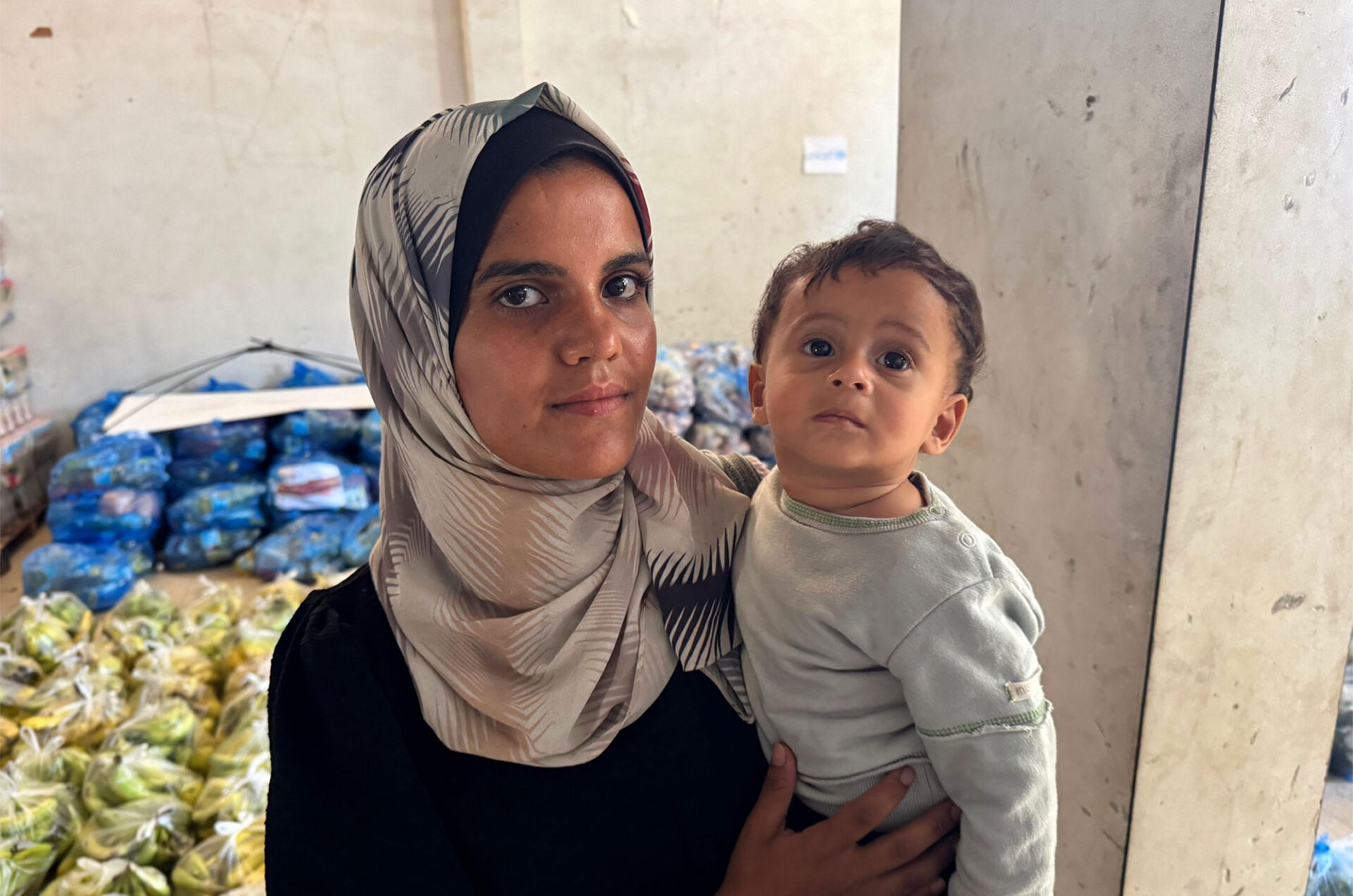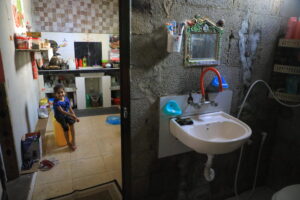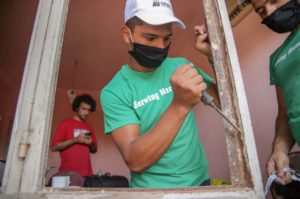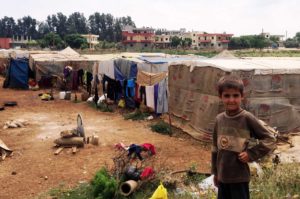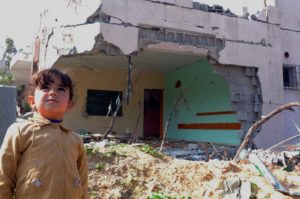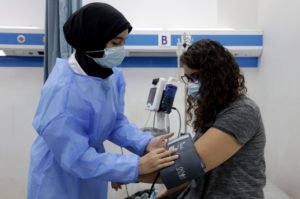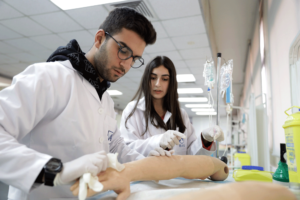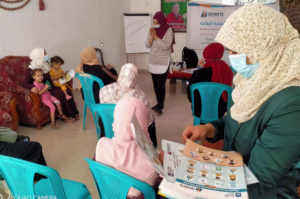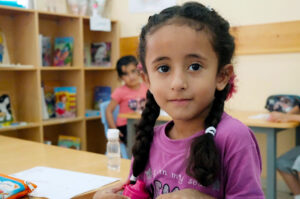Gaza is being erased. Due to a punishing blockade imposed since 2007, about 80% of Gaza’s 2.3 million people relied on humanitarian aid for at least some of their basic needs before October 2023. Today, the needs are far more urgent. Almost the entire population depends on relief to survive. Anera continues to deliver food, clean water, medicine and hygiene supplies to as many families as possible. Donate now to support the people of Gaza.
Stay updated on Gaza's news and track Anera's daily response log.
The Gaza War
On October 10, 2025 a ceasefire between the warring parties took effect. After two devastating years of warfare that made Gaza one of the worst humanitarian catastrophes in recent memory, there is now a fragile break in the fighting, although deadly attacks have continued. What began in October 2023 has continued with relentless bombardments, ground incursions and a near-total blockade, plunging Gaza’s more than two million residents into extreme deprivation and danger. The world’s leading authority on food insecurity determined in August 2025 that a famine was occurring in the Gaza City governorate.
Casualties and Displacement
The toll on civilians is staggering. Tens of thousands of Palestinians have been killed or injured as a direct result of the violence, with women and children making up a large share of the casualties. Displacement remains widespread: the vast majority of Gaza’s population has been forced from their homes, crammed into overcrowded shelters or makeshift camps. People live in unsafe conditions with little privacy, limited sanitation and scarce access to food and medical care.
Infrastructure Damage
Most of Gaza’s infrastructure lies in ruins. Hospitals, schools, universities, mosques and residential buildings have been destroyed or badly damaged. The health system is at breaking point: the few clinics and hospitals that are still operating face crippling shortages of fuel, medicine and staff. Surgeons often work without anesthesia.
Humanitarian Access and Aid
Access for humanitarian aid remains severely restricted, even in light of the October 2025 ceasefire. Since the early days of the war, aid convoys have faced long waits at border crossings, frequent denials of entry and constant risks once inside Gaza. Israeli authorities have limited the amount of aid that can enter Gaza, and key entry points such as the Zikim crossing have been closed off since September 2025. Aid trucks must undergo multiple rounds of inspection, a time-consuming process which creates bottlenecks at border crossings. Convoys and distribution points have come under fire, creating security risks for aid workers.
Despite these challenges, local and international organizations, including Anera, continue to find ways to deliver food, clean water and medical care to families in Gaza. Distributions reach shelters, neighborhoods and clinics where the needs are most urgent. But the scale of need is overwhelming. Every household in Gaza depends on outside assistance, and what is permitted through entry points falls far short of what is needed.
The lack of reliable access means aid often comes in sporadically, leaving families uncertain if or when help will arrive. This uncertainty adds to the sense of fear and exhaustion for people already enduring hunger, displacement and constant danger.
Water and Sanitation Crisis
A large percentage of Gaza’s water wells, pumping stations, sewage networks and treatment plants are non-functional or destroyed. Bombing and fuel shortages have crippled desalination plants and pipelines, leaving hundreds of thousands without clean water. Families rely on unsafe sources or on limited trucked-in supplies. Sanitation services are largely absent, leading to overflowing sewage, worsening health risks and a surge in waterborne diseases.
Psychological Impact
The psychological toll on Gaza’s people is profound. Daily exposure to violence, hunger and displacement has created widespread trauma as people are forced into prolonged survival-mode, especially among children. Aid groups report growing cases of anxiety, depression and post-traumatic stress. Yet mental health services remain almost non-existent, overwhelmed by demand and under-resourced in every way.
International Response
The international community has issued repeated calls for ceasefires and unfettered humanitarian access. While a short-lived ceasefire in early 2025 briefly resulted in an increased flow of aid, a durable peace remains elusive. The UN-led Integrated Food Security Phase Classification has officially declared famine in parts of Gaza, and the UN is urging immediate large-scale relief. Some governments have increased funding, but safe passage and sufficient scale of delivery remain blocked.
Anera’s Commitment to Safe and Impartial Aid
Anera does not work with or support the Gaza Humanitarian Foundation or its model for delivering aid. These sites, set up under Israeli and US oversight, have proven extremely hazardous for the very people they are meant to serve. International organizations, including the UN and leading human rights groups, have condemned this approach as dangerous and militarized.
Anera believes that humanitarian aid must be neutral, accessible and designed to protect the dignity and safety of civilians. We continue to call for aid delivery that follows international standards and prioritizes the well-being of the people of Gaza.
Long-term Consequences
Gaza will feel the consequences of this war for decades. Even amidst the ceasefire, the long-term ability of Palestinians to remain throughout the territory of Gaza remains under grave threat. Even under the most optimistic assumptions, the people of Gaza face a year zero — a level of infrastructure devastation almost unprecedented in modern times, prolonged displacement, massive educational losses and long-lasting psychological scars. Rebuilding will require not only vast international support but also political commitment to addressing the fundamental dynamics underlying decades of conflict. Without genuine protection for civilians and respect for humanitarian law, the cycle of destruction and displacement will continue.
GAZA STORIES
Our Impact
Healthcare
Anera operates primary healthcare centers in Khan Younis, Deir Al Balah and Gaza City. These clinics provide essential services such as pediatrics, internal medicine, wound care and surgery. Even with shortages of fuel, medicine and staff they remain among the few places where families can access dependable treatment.
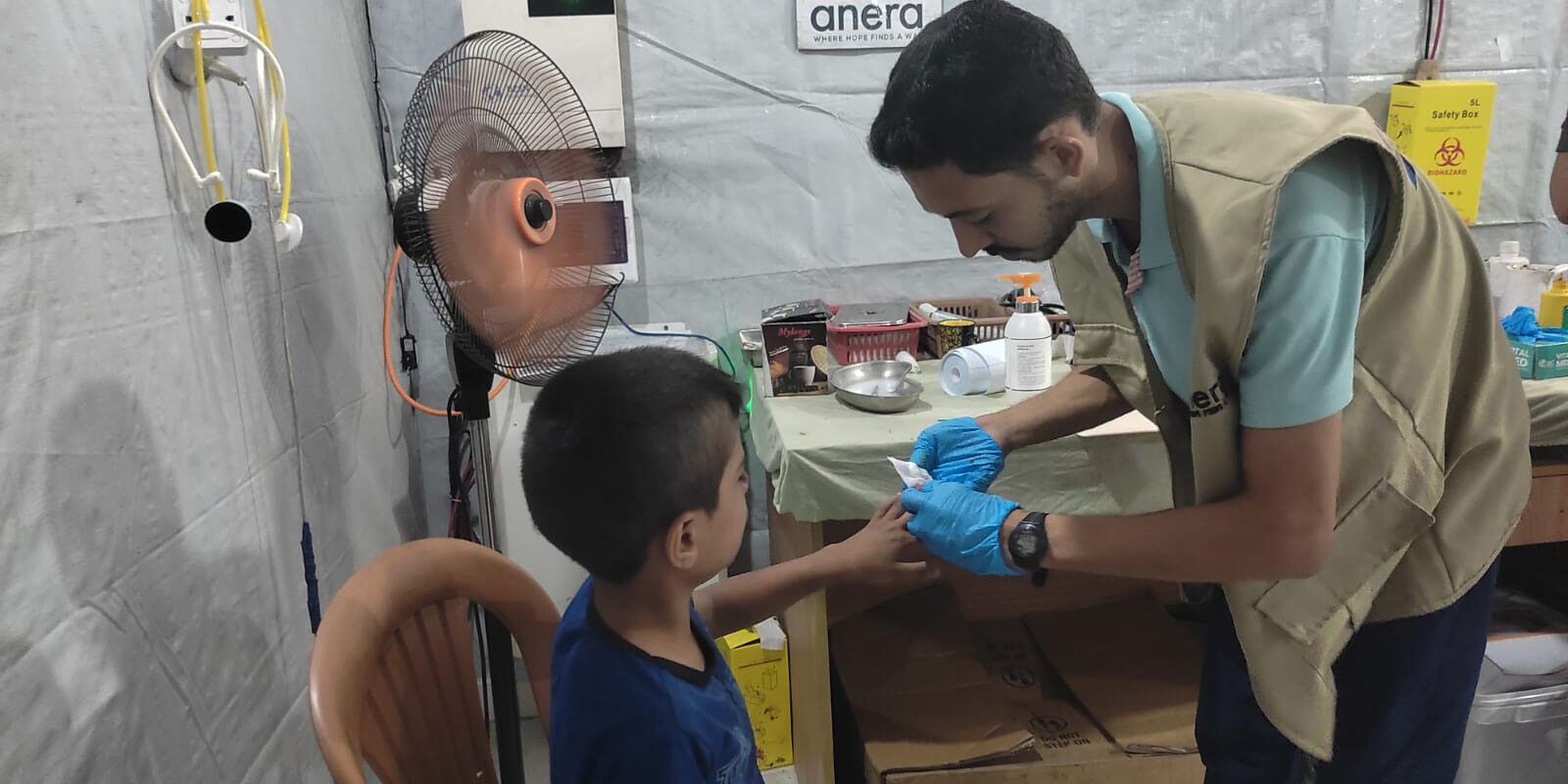

Food Security
In areas like Khan Younis and central Gaza, Anera distributes fresh produce and food baskets to displaced families. These deliveries make it possible for households to prepare their own meals with nutritious ingredients bringing comfort and dignity in the middle of crisis.
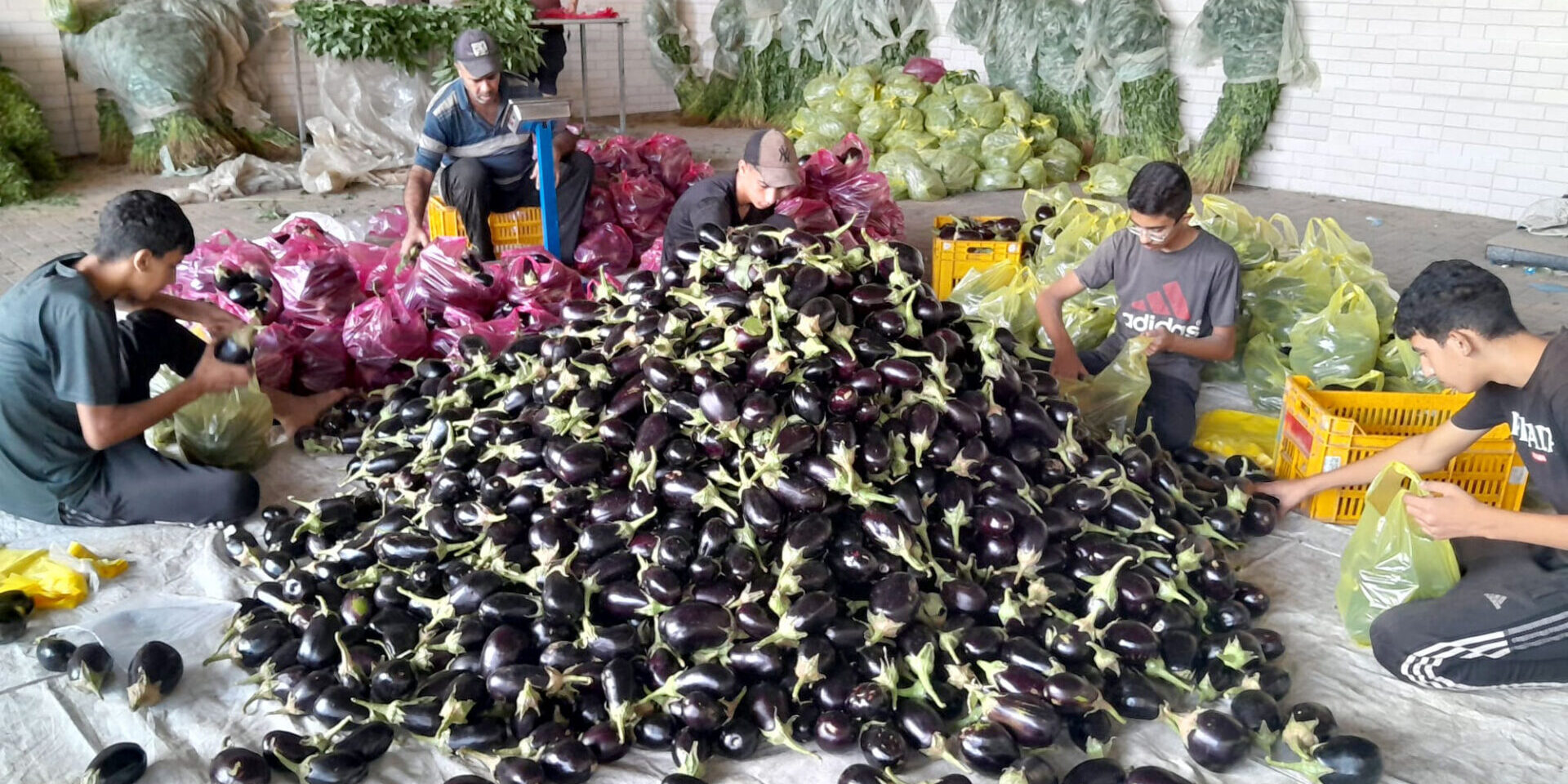

Water Access
Across Gaza City, Deir Al Balah and Khan Younis, Anera trucks in clean drinking water to shelters and neighborhoods cut off from the regular supply. This is critical in a setting where damaged infrastructure and fuel shortages have made safe water nearly impossible to find.
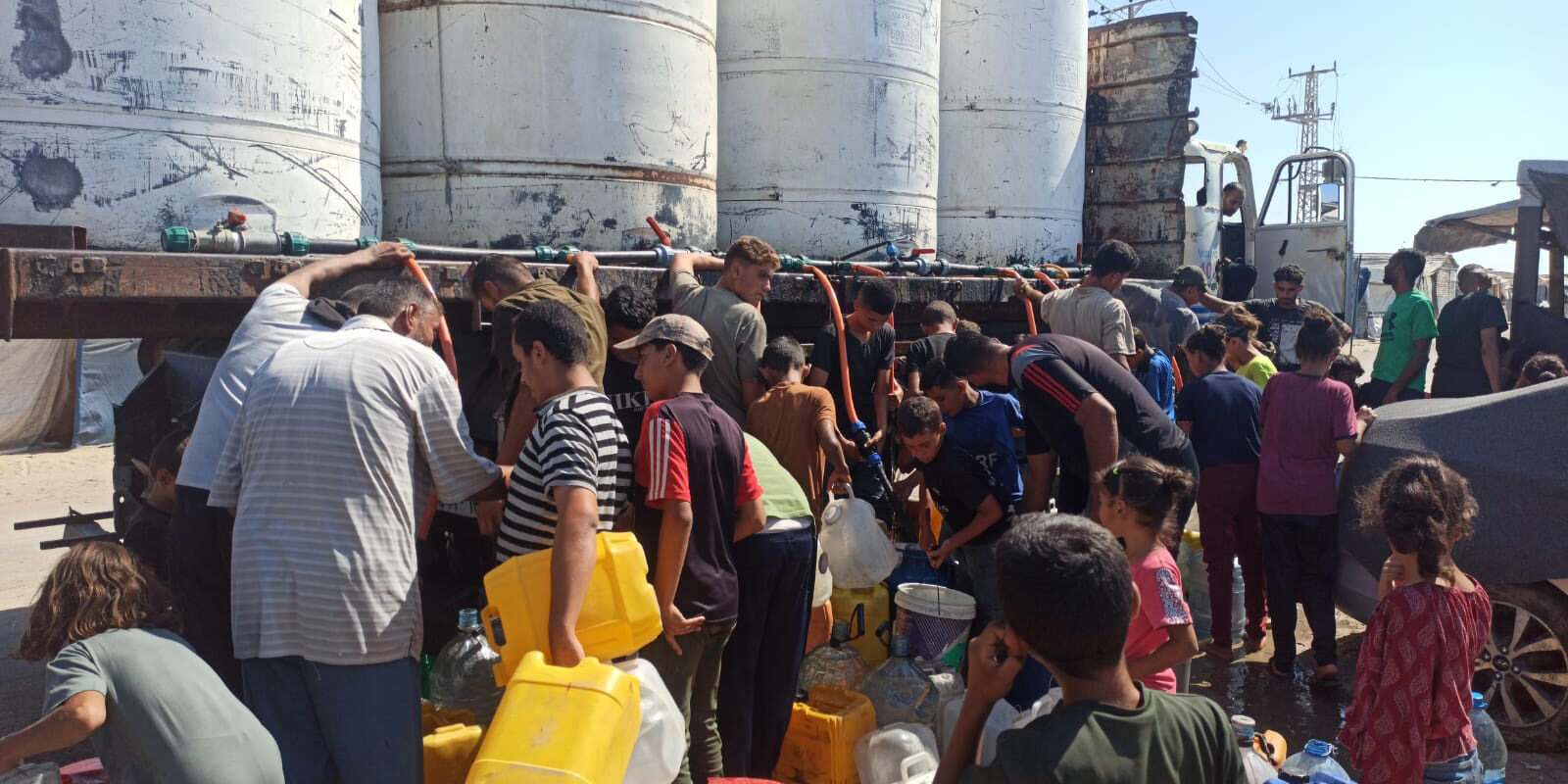

Education and Psychosocial Support
Anera supports displaced children and youth by setting up temporary learning spaces in southern Gaza and offering psychosocial activities in and around shelters and in areas where large numbers of families have been displaced. These programs provide safe spaces to learn, play and heal while also helping families hold on to a sense of stability and hope during displacement and loss.
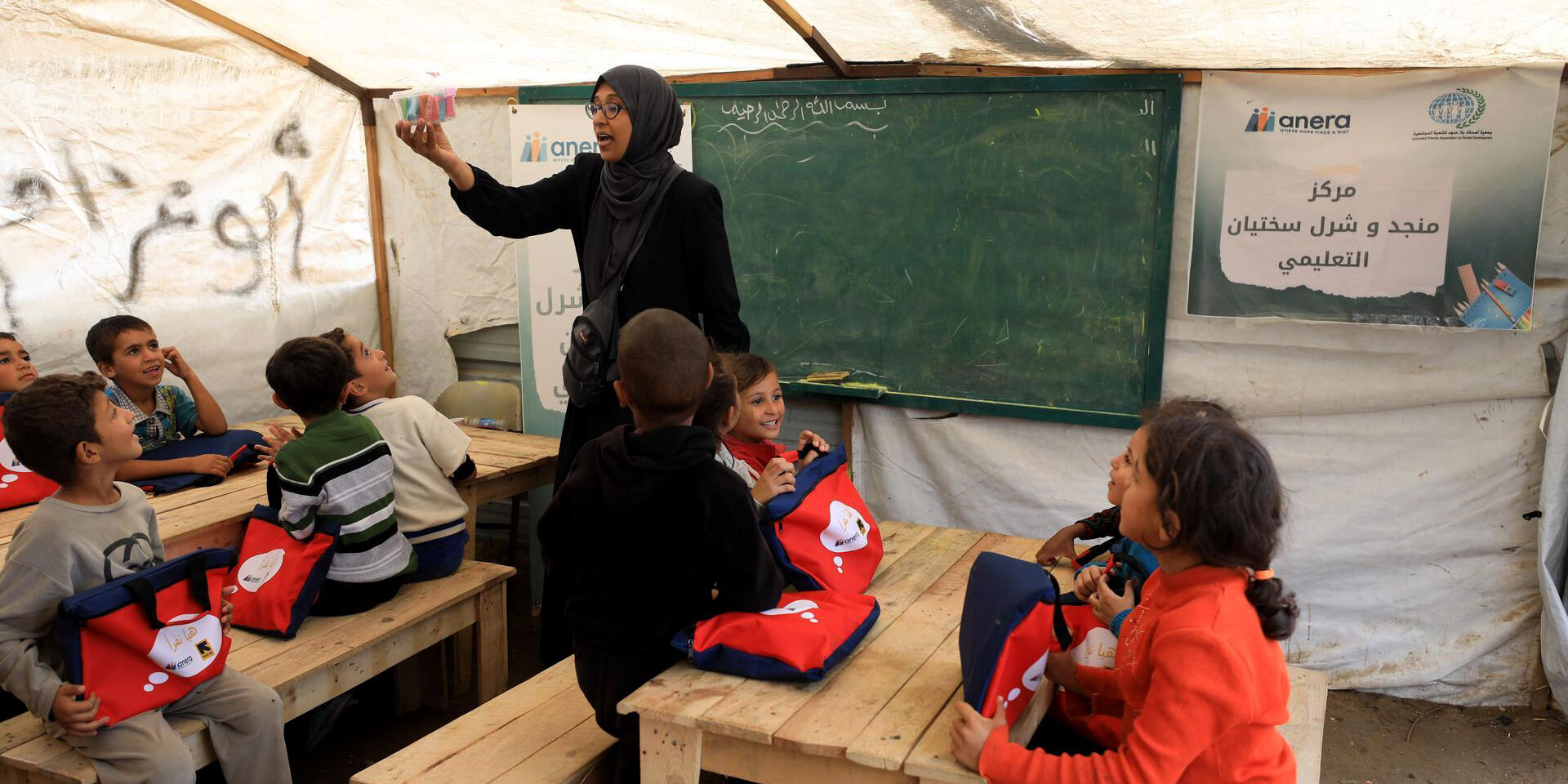

Who Makes Up Anera’s Gaza Team
Anera’s 18 Gaza staff, rooted in the very communities they serve, continue to show remarkable dedication in the face of extreme hardship. They carry out their work while enduring the same dangers, hunger and displacement as everyone else in Gaza. Anera places the highest priority on their safety, making clear that staff must take every step possible to protect themselves and their families. When conditions are too dangerous, they pause work and resume only when it is safe to do so.


BY THE NUMBERS
The Situation in Gaza
85%
of Gaza's population is displaced.
With more than 1.8 million people forced from their homes, the humanitarian crisis is acute and only growing worse.
> 50%
of homes in Gaza have been completely destroyed.
Many Palestinian families are now homeless or at overcrowded UN shelters with little to no resources.
141 square miles
is the total size of the Gaza Strip.
Before the war, Gaza's more than 2 million residents were spread out in this small strip of land.
Who lives in Gaza?
A population of refugees and their descendants
The wars of 1948 and 1967 left hundreds of thousands of Palestinians homeless. Many ended up in Gaza and approximately 80% of the current population is not from there, but instead originated from other parts of historic Palestine. Over time, the eight Palestinian refugee camps transitioned from tents to semi-permanent housing.
Learn more, read our Gaza Primer.
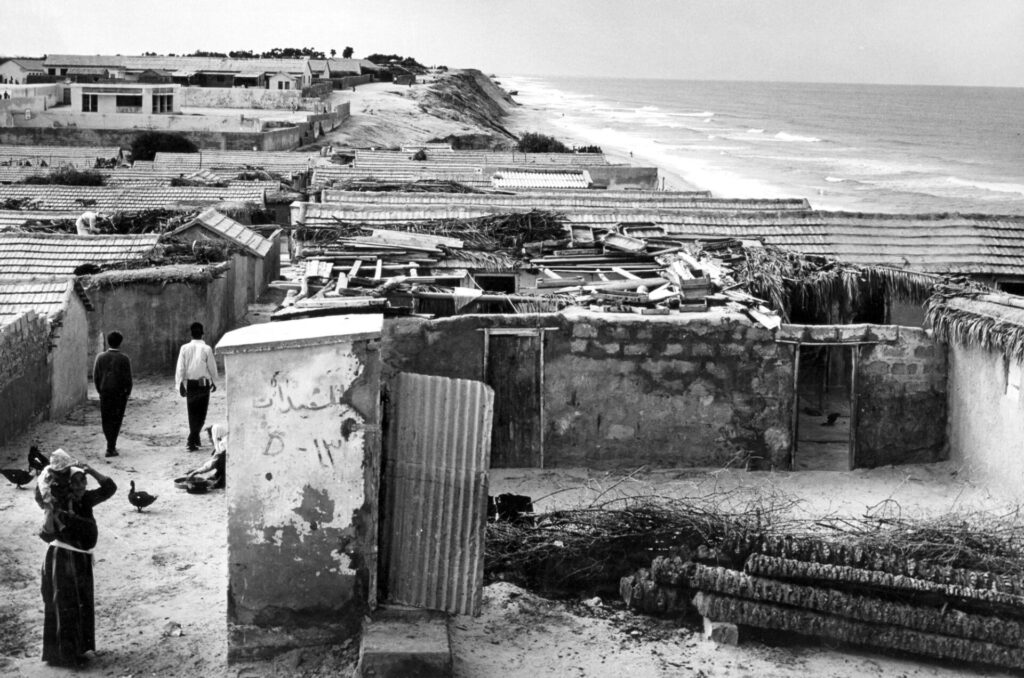

What Was the Situation in the Gaza Strip Before October 7th?
Between 2007 and October 2023, a blockade imposed by Israel and Egypt had stifled Gaza's economy, restricting the import and export of goods, including vital medical supplies and farmers' produce. This situation led to widespread poverty, with a shortage of medicines and medical equipment affecting Gaza's residents.
Hospitals in Gaza faced challenges treating patients due to outdated medical equipment and shortages of essential supplies like blood bags and medications. Individuals with disabilities encountered difficulties with inadequate care and inaccessible facilities. Water quality remained a concern, contributing to illnesses, while poor sanitation, exacerbated by the absence of sewage networks, further compounded the hardships faced by communities.
Critical resources like water and electricity were in severe shortage, with daily power cuts due to inconsistent supply from fuel and electricity providers. Gaza residents grappled with a power crisis, impacting water purification, farming, and daily tasks. The unpredictable nature of electricity availability disrupted daily routines, making it challenging for residents to focus on essential activities.
Despite these myriad challenges, the resilient people of Gaza had successfully built a functioning and intricate society that encompassed commerce, small businesses, education, art and culture, basic healthcare and private ownership of property and possessions. Regrettably, much of this progress was dismantled after October 7th, leaving the community devastated. In light of these dire circumstances, it becomes imperative for the international community to formulate and present a new vision for Gaza, aiming to alleviate the profound suffering experienced by the Palestinian population in the region.
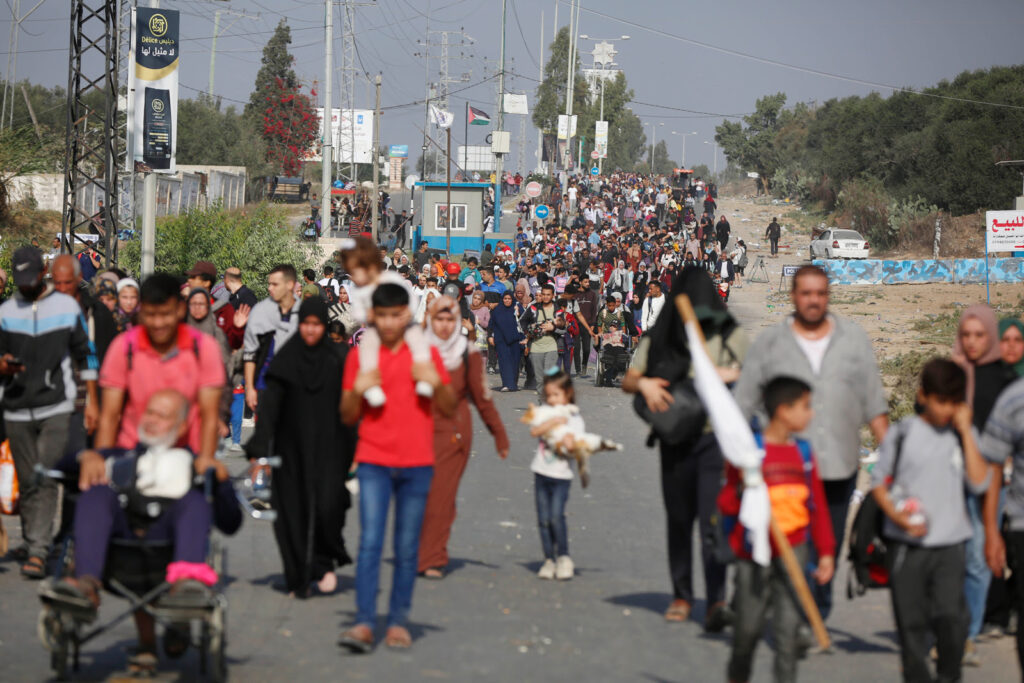

Learn About Anera's Deep Roots in Gaza
Anera has delivered programs in Palestine since 1968. Choose a governate and click to learn more about Anera's work in that area.
North Gaza
Current Projects
- Supporting women’s cooperatives
- Delivering medical aid to local partners in Beit Lahia and Jabalia
- Supporting childhood nutrition and education through Farms to Fosool
- Providing greenhouses to vulnerable families
Recent Projects
- Rebuilt conflict-damaged kindergartens
- Build health clinics and rehabilitation centers
- Upgraded wells and water and wastewater networks
Learn more about our long history and work in North Gaza
Gaza
Current Projects
- Providing home rooftop gardens to families
- Installing reverse osmosis water filtration units at healthcare facilities, schools and community centers
- Supporting women entrepreneurs with equipment, training and mentorship through Women Can
Recent Projects
- Renovated the Asqula stormwater basin
- Renovated kindergartens and other educational institutions
- Renovated the Gaza Sports Club
- Delivered dialysis machines to Shifa Hospital
Learn more about our long history and work in Gaza City
Deir Al Balah
Current Projects
- Installing greenhouses and irrigation systems
- Delivering freshly prepared, nutritional meals to kindergartens
- Supporting women entrepreneurs through our Women Can program
- Distributing medical aid to local healthcare providers
Recent Projects
- Constructed a new educational space in Al Zawayda
- Rehabilitated agricultural roads
- Built or renovated a number of preschools
- Installed reverse osmosis desalination and solar systems at schools
- Renovated the Musaddar sports club
- Installed a new wastewater network that prevents flooding and contamination in the Deir Al Balah Refugee Camp
Learn more about our long history and work in Deir Al Balah
Khan Younis
Current Projects
- Supplying medical aid to local medical clinics
Recent Projects
- Built scores of greenhouses with irrigation networks
- Renovated a rehabilitation center for children with disabilities
- Constructed a brand new facility for the community center of the Charitable Future Society
Learn more about our long history and work in Khan Younis
Rafah
Current Projects
- Providing food vouchers during Ramadan to assist the most vulnerable families
- Distributing medical aid to local healthcare partners like the Rafah chapter of the Gaza Central Blood Bank
- Installing family greenhouses on small land plots and rooftops
Recent Projects
- Hosted a series of psychosocial support camps for young children in response to the August 2022 bombings in the area
- Renovated a number of kindergartens
- Installed reverse osmosis desalination system on an irrigation network, improving crop yields and quality
Learn more about our long history and work in Rafah
Gaza Palestinian Refugee Camps
Gaza is home to about 24 percent of the world's Palestinian refugees, second only to Jordan, which is home to about 40 percent. Many Palestinian refugees also live in the West Bank, Syria and Lebanon. Before the war, Gaza's refugees lived in eight different refugee camps. Now many of these camps have been bombed, depopulated and reduced to rubble.
Gaza and West Bank Response Log
In this log, Anera will provide updates on unfolding war in Palestine and our response. Please stay tuned here for the latest information.

